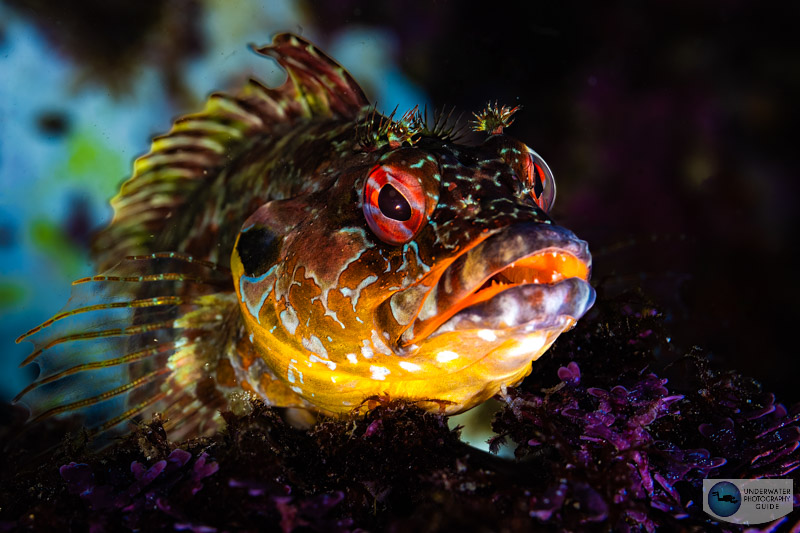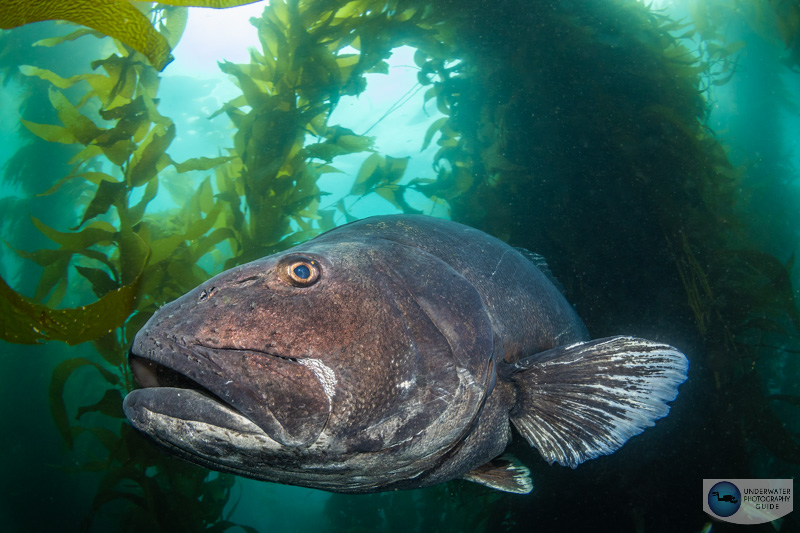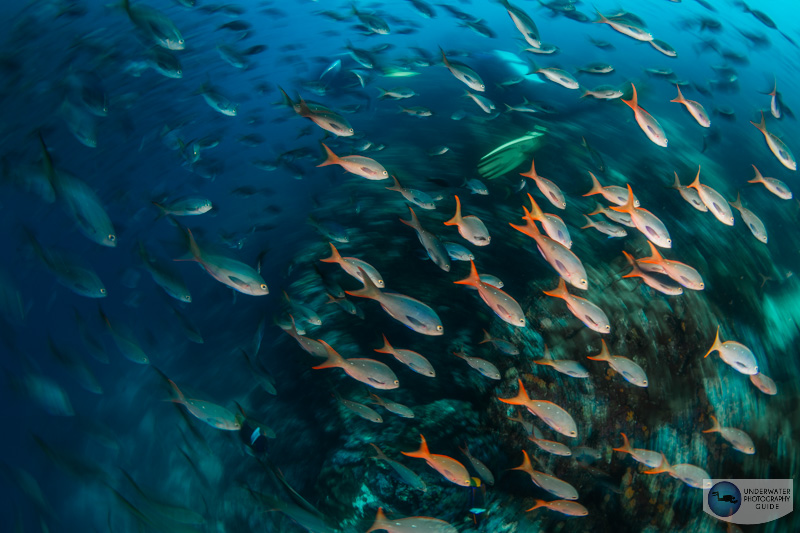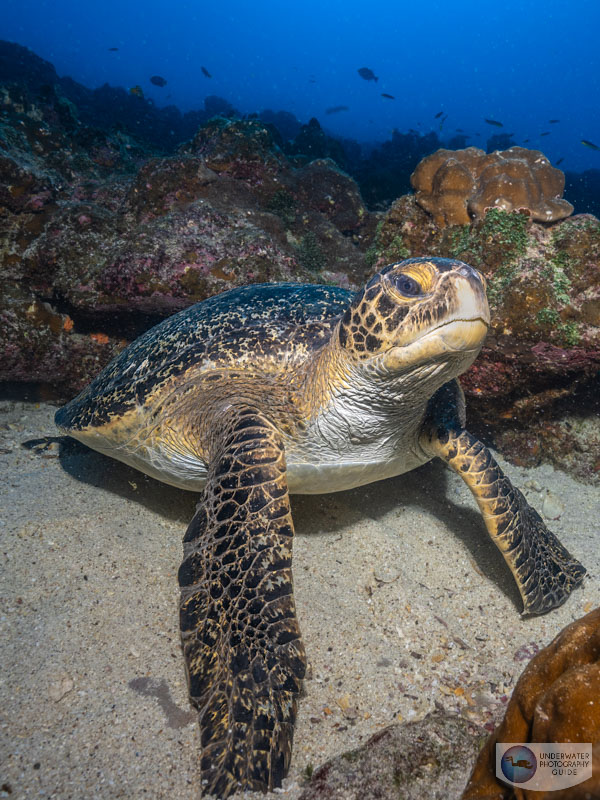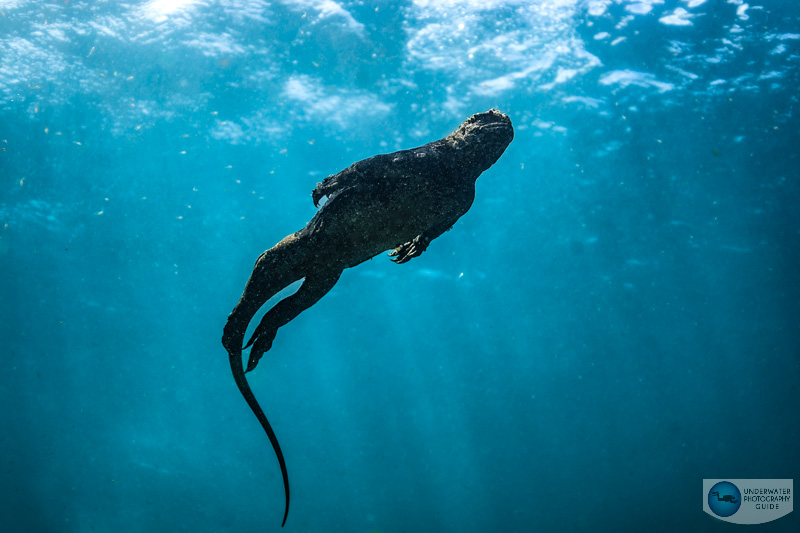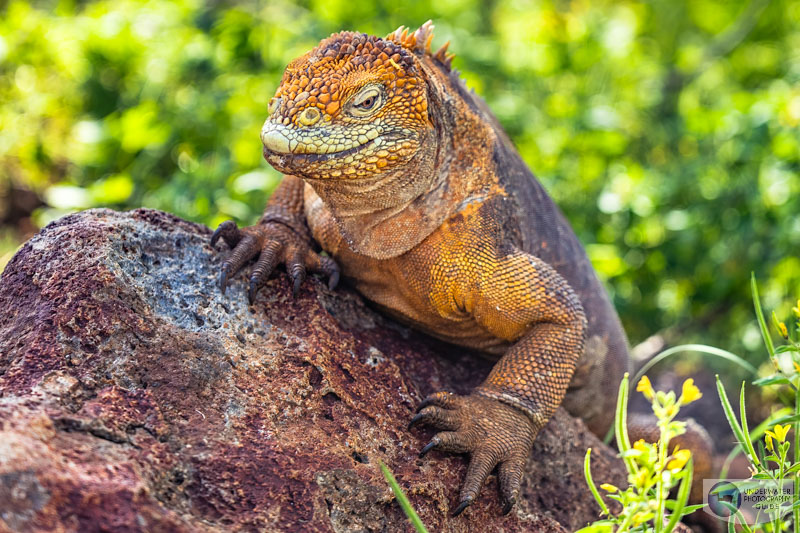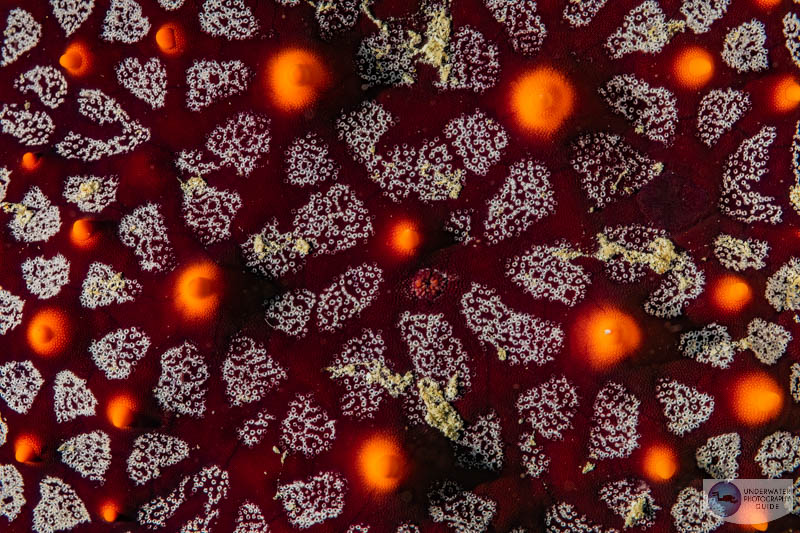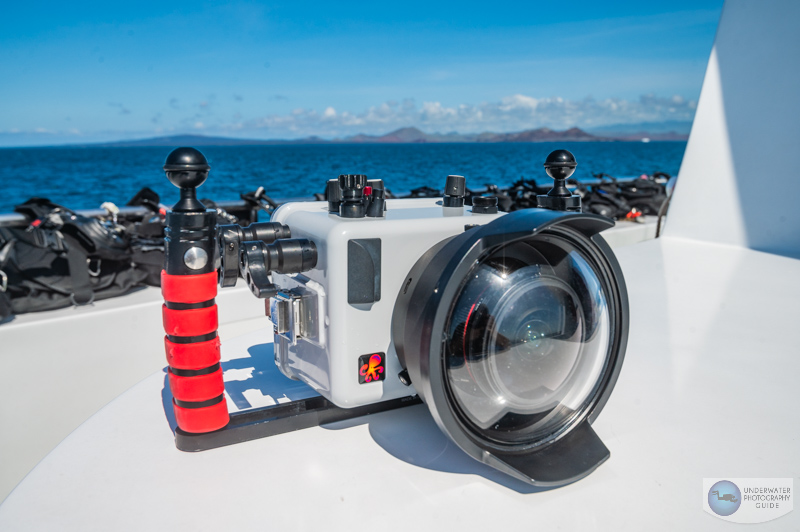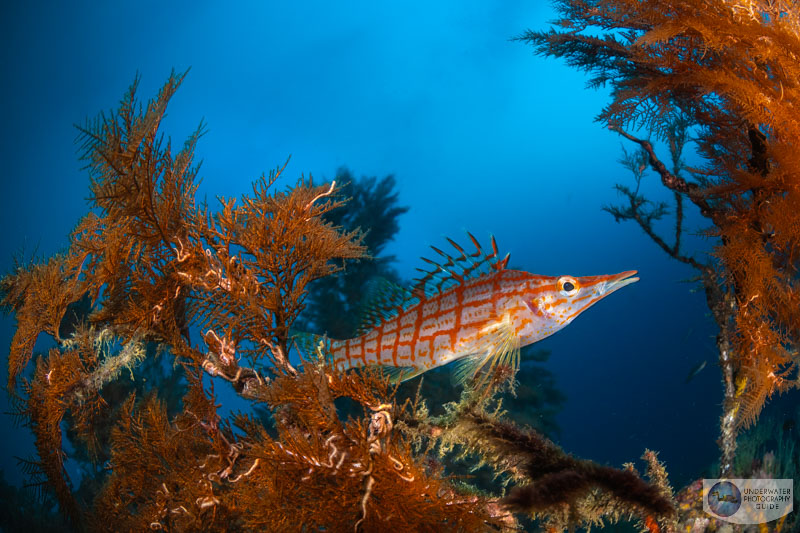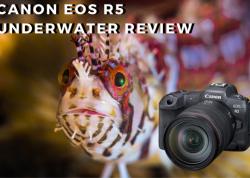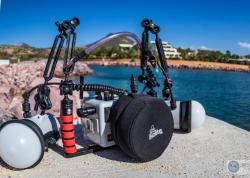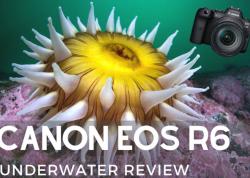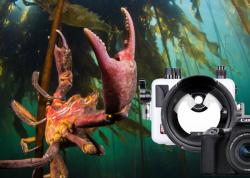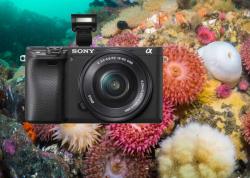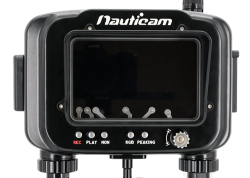Canon EOS R8 Review
If you've ever thought about upgrading to a full-frame camera, now might be the time. The recent release of the Canon EOS R8 represents incredible value for an entry level full-frame mirrorless camera. At just $1499 for the camera body, the R8 is capable of 24.2 megapixel photos, 4K/60p video recording and animal eye autofocus tracking. In fact, the R8's design carries over from the Canon EOS R6 Mark II - with the same sensor and processor. That said, being an entry-level full-frame camera, there are some limits to the R8 including a lack of in-body image stabilization and no front curtain shutter. The question is - will these limitations be a hinderance for underwater shooters?
After coming back from a Bluewater Travel underwater photoworkshop to the Galapagos, it's clear that the Canon EOS R8 is a game changer for entry-level full frame shooters. There has never been a time when you could squeeze this much value out of a camera....and a compact camera at that. With an Ikelite R8 housing, available at Bluewater Photo, being the only housing currently available for this camera, Ikelite was able to fit the R8 into its smaller DLM sized housing normall designed for crop sensor camera.
Canon EOS R8 Key Specifications
- 24.2 megapixel full-frame CMOS sensor
- Dual pixel autofocus with animal eye autofocus tracking
- Low light autofocus down to -6.5 EV
- Uncropped 4K/60p video with C-Log3 recording
- 10-bit 4:2:2 internal recording
- 1/200s flash sync speed
- 370 shot battery life using LCD
- Electronic first curtain shutter (only one mechanical shutter)
- 6fps burst shooting
- No in-body image stabilization
- Size: 132.5 x 86.1 x 70mm
- Weight: 461 grams
Purchase a Canon EOS R8 underwater housing at Bluewater Photo:
View All Canon R8 Underwater Housings
Canon EOS R8 vs Canon EOS R6 Mark II
With many similarities between the Canon EOS R8 and the R6 Mark II, many may be wondering which camera to buy. Afterall, there is a $1000 price difference with the R6 II retailing for $2499 for the body - but is it really worth it? As we mentioned, the Canon R8 has the same image sensor and processor as the R6 Mark II. For the most part, that means the image quality will be roughly the same. However, there is a key difference between the two cameras. The Canon R8 does not have a mechanical first curtain shutter - only one mechanical rear curtain shutter. This means at high shutter speeds, the exposure may not be consistent throughout the image and the quality of bokeh at open apertures is not quite as pleasing. For underwater shooters, this doesn't pose much of a problem as you don't go above the camera's sync speed underwater when you are shooting with strobes. So many of the image quality issues at high shutter speeds you might witness with the R8 are not applicable underwater. That said, those that do a lot of topside photography - particularly wildlife photography - may want to consider the R6 Mark II.
The second major difference between the two cameras is that the Canon R8 does not have an in-body image stabilization system (IBIS). An IBIS system allows cameras to shoot at lower shutter speeds with less motion blur from camera shake as well as capture smoother video. For cold water photographers that shoot in limited visibility, it is a shame that there is not IBIS in the R8 - but that's what keeps the camera smaller. Overall, the lack of IBIS should be more of a concern for underwater video shooters.
Beyond those two limitations, out of the box, the Canon EOS R8 is very similar to the Canon R6 Mark II with the same autofocus system and the same video recording and log recording capability. Overall, we believe most underwater photographers would be happy with the Canon EOS R8 over the Canon EOS R6 Mark II as many of the photo limitations on the R8 do not apply underwater. On the other hand, video shooters may want to consider the Canon EOS R6 Mark II as IBIS is very useful for capturing steady video in a three dimensional environment.
Canon EOS R8 Key Features
Excellent Full-Frame Image Quality
You may be considering the Canon EOS R8 as your first full-frame camera. But why is a full-frame camera a good choice for underwater photography? Typically, full-frame sensors are able to capture more details in both your highlights and shadows so that you are able to capture images with better dynamic range. They also create better background separation by reducing the depth of field in your image. While this can be useful for some kinds of photography, it does require you to shoot at higher f-stops if you want more of your image in focus.
The Canon EOS R8 is equipped with a 24.2 megapixel sensor which we consider to be the "sweet spot" for a full-frame sensor. Sensors of this resolution do not produce much noise, but they also do not have as much cropping ability as high resolution sensors like the one found on the Canon EOS R5. Overall, we've been extremely pleased diving with the Canon EOS R8's sensor. In low light situations it was easy to push the imagery up to ISO 1600 with minimal effects on noise. Just take a look at the giant black sea bass photo captured above on a gloomy day in California.
Professional Autofocus
Although it is an entry level camera, the Canon EOS R8 is equipped with one of the best autofocus systems on the market - the same one that is available on the Canon EOS R6 Mark II. Our underwater tests indicate that it is indeed the same system. The autofocus tracking was able to quickly acquire focus and accurately track it. There were multiple times when it was possible to track fish eyes, even with a wide angle lens. One example is the hawkfish image at the bottom of this review.
Battery Life
Like the Canon EOS R10 and Canon EOS R7, the battery life on the R8 is surprisingly good. Really, really good. Despite having a smaller LP-E17 battery like its cropped sensor cousins, we were able to easily shoot the battery for 6 dives. That's a day and a half of diving. While the battery is only rated for 220 shots through the viewfinder, it's rated for 370 shots through the LCD, and we found it often lasted longer.
One Mechanical Shutter
The Canon EOS R8 was designed with a single mechanical shutter - the rear curtain shutter. The front shutter is electronic. This modification reduces the mechanical drive speed of the camera which is 6 fps. Six frames per second is plenty fast enough for anyone shooting with strobes. That said, a single mechanical shutter can produce uneven exposures at very fast shutter speeds (above 1/4000) and can affect bokeh at shutter speeds higher than 1/500. We played around with the camera topside at high shutter speeds and didn't find any noticeable issues or differences in the bokeh. The image below was shot at 1/1000 sec and the bokeh looks fine. Moreover, underwater shooters will not be affected by this in most cases as they are limited by the flash sync speed.
Canon EOS R8 for Underwater Photography
Overall the Canon EOS R8 represents and extremely affordable full-frame option for underwater shooters that are looking for the best value underwater image quality. The camera's shutter limitations will not be an issue underwater, but cold water shooters may want to consider the fact that the R8 does not have IBIS. That said, in the Galapagos, it was fairly easy to photograph subjects as low as 1/40th of a second and have no blur from camera shake. The image quality is the same great image quality you will find on the Canon EOS R6 Mark II and the autofocus system is capable of focusing underwater in most lighting conditions (even without a focus light). In fact, an autofocus so advanced in a camera of this price has previously been unheard of until the R8 came out. In many ways, Canon did not strip down the Canon EOS R8 of features in order to make an affordable full frame.
Some underwater photographers may be considering the Canon EOS R7, R10, or R50 as an even more affordable (or similarly affordable) APS-C mirrorless option. Generally speaking, because full-frame cameras produce images with a shallower depth of field, underwater macro photographers may be more keen on the APS-C siblings of the R8. But if you are a wide angle photographer or love photographing sunballs, the dynamic range of a full-frame sensor is unstoppable.
Canon EOS R8 for Underwater Video
Although the Canon EOS R8 is missing an IBIS system, it still represents one of the best value full-frame video cameras on the market. In fact, you'd be hard pressed to find another camera that can shoot 4K/60p video using the full width of the sensor for the same price point. Due to large amounts of movement when filming underwater, it's important to be able to film at 4K/60p so that you can slow down video footage to stabilize it.
The R8 is also capable of shooting C-Log footage that allows you to film video with more dynamic range and better detail. Log footage does need to be color graded in post production, but the camera is also capable of recording in 10-bit 4:2:2 chroma sampling which makes editing a bit easier.
Canon EOS R8 Underwater Housings
Although we hope that other underwater housing manufacturers will produce a housing for the Canon EOS R8 - currently the only underwater housing available is Ikelite's Canon EOS R8 underwater housing. We couldn't be more excited about this polycarbonate offering for the simple fact that it's not Ikelite's typical full-fram DL housing. It's actually a dry lock micro (DLM) housing normally designed for crop sensor cameras. The Canon EOS R8 is so small that it was able to fit into a tiny travel-sized package that we just haven't seen in a full-frame camera. The housing is equipped with an optional vacuum kit to determine that the seal is good before hopping in the water and back-button autofocus/shutter levers for seamless ergonomics. A clear back ensures that you will notice any issues inside the housing before a leak detector ever could. In this review all of our photos were captured with dual Ikelite DS 230 strobes and an Ikelite Canon TTL converter.
Conclusions
The Canon EOS R8 is an incredible option for anyone looking to shoot their first underwater full-frame camera. It's also the best value full-frame camera option for underwater photo and video. While it does have it's limitations with the shutter and IBIS - many of these limitations will not be very significant underwater. Overall the benefits of a pro-level autofocus system and pro-level image quality outweigh the drawbacks.
RECOMMENDED ARTICLES
SUPPORT THE UNDERWATER PHOTOGRAPHY GUIDE:
The Best Service & Prices on u/w Photo Gear
 Visit Bluewater Photo & Video for all your underwater photography and video gear. Click, or call the team at (310) 633-5052 for expert advice!
Visit Bluewater Photo & Video for all your underwater photography and video gear. Click, or call the team at (310) 633-5052 for expert advice!
The Best Pricing, Service & Expert Advice to Book your Dive Trips
 Bluewater Travel is your full-service scuba travel agency. Let our expert advisers plan and book your next dive vacation. Run by divers, for divers.
Bluewater Travel is your full-service scuba travel agency. Let our expert advisers plan and book your next dive vacation. Run by divers, for divers.




